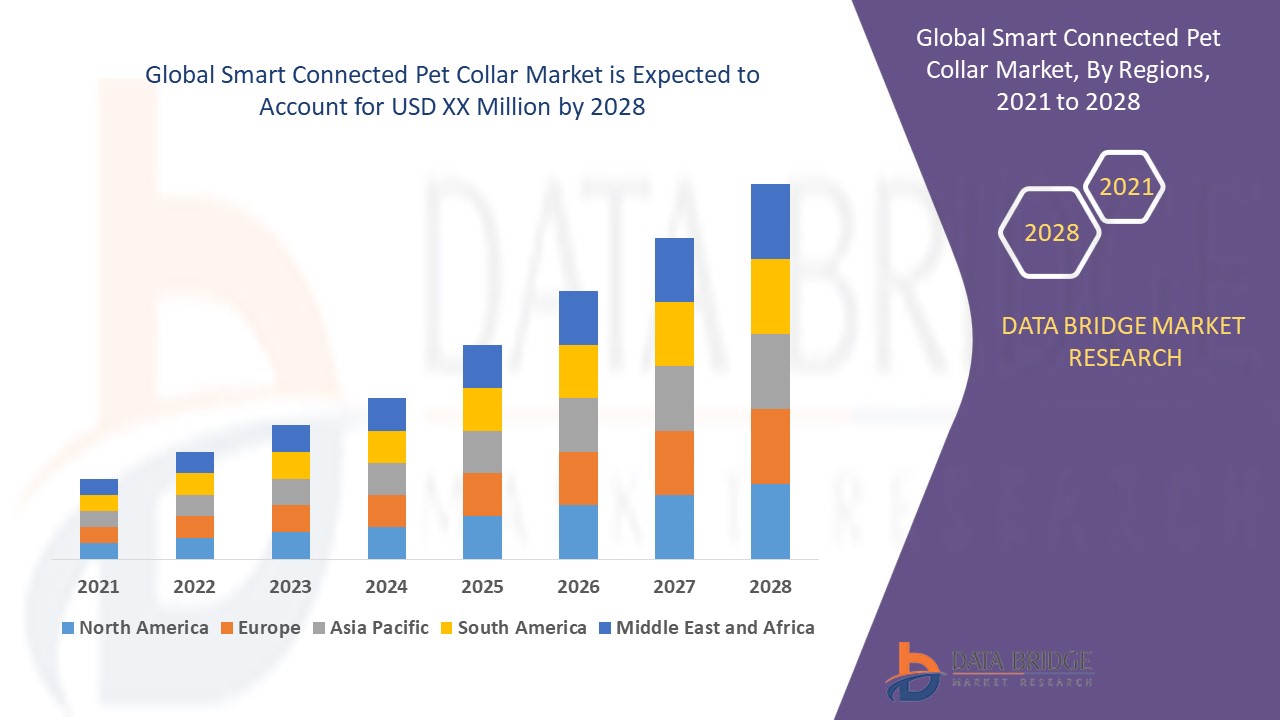Introduction
The Smart Connected Pet Collar Market is a rapidly growing segment within the pet industry, revolutionizing the way pet owners monitor, track, and care for their furry companions. With advancements in technology, these collars integrate GPS tracking, health monitoring, activity tracking, and even behavioral analysis to enhance pet safety and well-being. As more pet owners seek smart solutions for keeping their pets secure and healthy, the market for connected pet collars continues to expand, driven by innovation and rising demand for real-time pet management.
The Evolution of Smart Connected Pet Collars
Pet collars have transitioned from basic identification tags to advanced smart devices equipped with sensors, connectivity, and artificial intelligence. Earlier pet tracking systems relied on simple RFID chips embedded in collars, requiring manual scanning. However, modern smart collars leverage GPS, Bluetooth, and Wi-Fi connectivity to provide real-time location updates and activity insights.
The introduction of AI-driven analytics enables pet owners to monitor their pets' health parameters, including heart rate, temperature, and sleep patterns. Some collars are designed to detect abnormal behavior or signs of distress, alerting owners via mobile applications. The integration of voice commands, geofencing, and remote training features further enhances the functionality of these devices, making them indispensable tools in pet care.
Market Trends
Several key trends define the trajectory of the Smart Connected Pet Collar Market:
- AI and Machine Learning Integration: Smart collars use AI-driven behavioral analysis to detect health issues and predict pet needs.
- GPS and Real-Time Tracking: Advanced location-tracking features allow owners to set safe zones and receive alerts if pets wander beyond predefined boundaries.
- Health Monitoring Capabilities: Smart collars provide biometric tracking, including hydration levels, activity patterns, and vital signs.
- Voice Command and Smart Assistant Compatibility: Some collars integrate with voice assistants, enabling pet owners to send commands remotely.
- Eco-Friendly and Sustainable Materials: Manufacturers focus on producing collars with recyclable and non-toxic materials.
- E-Commerce and Subscription Models: Online platforms provide greater accessibility, with subscription-based services offering extended features like lost pet recovery.
Challenges in the Smart Connected Pet Collar Market
Despite its promising growth, the Smart Connected Pet Collar Market faces several challenges:
- High Cost of Smart Devices: Premium smart collars can be expensive, limiting accessibility to budget-conscious pet owners.
- Battery Life and Connectivity Issues: Continuous tracking and monitoring require long-lasting battery life, which remains a challenge for manufacturers.
- Privacy and Data Security Concerns: Pet tracking systems collect sensitive data, raising concerns about data protection and potential cyber vulnerabilities.
- Market Fragmentation and Product Differentiation: With numerous brands offering similar features, competition is high, making innovation essential for market players.
- Adoption Barriers Among Traditional Pet Owners: Some pet owners remain hesitant to adopt smart collars, preferring conventional identification methods.
Market Scope
The Smart Connected Pet Collar Market caters to various segments:
- Pet Owners Seeking Security: Owners of active or adventurous pets invest in GPS-enabled collars for safety.
- Veterinary Professionals and Pet Care Providers: Smart collars assist in health monitoring and early detection of medical conditions.
- Animal Shelters and Rescue Organizations: Tracking technology helps shelters monitor stray pets and improve adoption rates.
- Training and Behavioral Experts: Professionals use smart collars to analyze pet behavior and develop training programs.
Market Size and Factors Driving Growth
The market continues to grow due to multiple driving factors:
- Increase in Pet Ownership: Rising pet adoption worldwide boosts demand for advanced pet care solutions.
- Awareness of Pet Health and Safety: Owners prioritize wellness monitoring tools for early detection of health issues.
- Advancements in IoT and Connectivity: The proliferation of smart home ecosystems influences pet collar innovation.
- Rise in Smart Wearables for Pets: Wearable technology expands beyond humans, creating demand for intelligent pet accessories.
- Expansion of E-Commerce Platforms: Online retail enhances market accessibility, allowing global distribution.
- Customization and Personalization Trends: Demand for customized smart collars with pet-specific features continues to rise.
Source : https://www.databridgemarketresearch.com/reports/global-smart-connected-pet-collar-market
Conclusion
The Smart Connected Pet Collar Market is transforming pet care through technology-driven solutions, offering enhanced security, health monitoring, and behavioral insights. As pet owners embrace connected devices to improve their pets' well-being, the market remains poised for sustained growth. Innovations in AI, IoT, and smart tracking systems ensure continuous advancements, making smart collars an integral part of modern pet care.
